Introduction
When companies face financial difficulties or underperformance, restructuring and turnaround strategies become crucial for survival and future success. These strategies involve making operational and organizational changes to increase efficiency, reduce costs, and shift strategic directions. However, the process can be turbulent and uncertain, impacting job security and work culture.
This article explores various types of restructuring strategies, such as cost restructuring, divestment, mergers and acquisitions, portfolio restructuring, cultural restructuring, financial restructuring, crisis communication, and operational restructuring. It also emphasizes the key components of a successful turnaround strategy, including strategic planning and decision-making, measuring progress and success, and focusing on employee morale and commitment, as well as customer retention and supplier relationships. The article provides case studies and expert insights to guide CFOs in implementing effective restructuring strategies and emphasizes the importance of recognizing the need for change and adapting to dynamic market conditions.
Understanding the Urgency of Restructuring and Turnaround
When businesses face financial challenges or underperformance, implementing turnaround strategies and reorganization can be crucial for their survival and future achievements. The process of restructuring is multifaceted, altering the operational and organizational fibers to boost efficiency, cut down on costs, and shift strategic directions, often leading to a turbulent period of uncertainty that can affect job security, roles, and work culture. This requires a delicate balance between the need for change and the well-being of the workforce.
Stora Enso, a paper manufacturer established in 1288, exemplifies successful transformation by transitioning into a renewable materials company, responding to emerging market trends and customer behaviors. This proactive approach to change, including developing innovative products like sustainable building materials, has allowed Stora Enso to remain relevant and profitable in a rapidly evolving industry.
In the face of such transformations, businesses must prioritize their expenses and reassess their monetary strategies without hastily cutting costs. A thorough examination of the statements can expose the root reasons for distress, directing a strategic reorganization to enhance liquidity and profitability. As reported by Rite Aid Corporation, a well-executed financial restructuring plan can considerably reduce debt and enhance an organization's agility, enabling it to focus on core initiatives and serve its customers more effectively.
The necessity of innovation in today's dynamic market cannot be understated. Firms that place human concerns at the heart of their management practices, rather than solely relying on traditional methods and tools, often detect and adapt to changes more swiftly, achieving faster growth and greater value for stakeholders. As the labor market evolves, these versatile businesses tend to lead in employment dynamism, setting themselves apart from the competition.
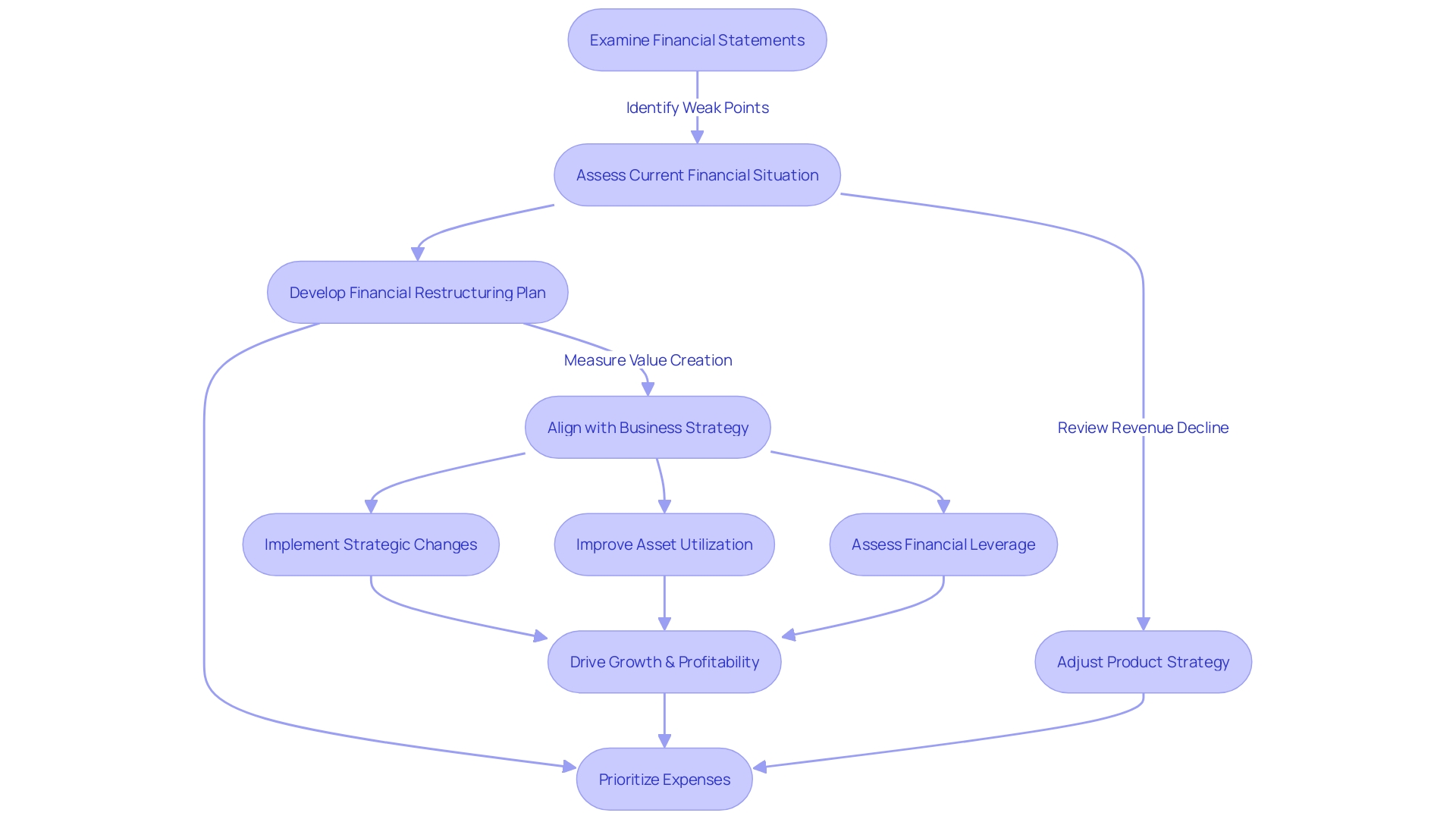
Types of Restructuring Strategies
To achieve a successful business turnaround, organizations often need to reconsider their strategies and operations. A case in point is a user experience overhaul facilitated by a savvy selection of technology stack, including Django and Tailwind, coupled with a targeted SEO strategy that began with competitor analysis. This dual approach led to improved sales and glowing customer reviews in just the first week. Similarly, a major hotel leveraged its prime location to revamp its restaurant's offerings, an astute move that capitalized on market understanding as the cornerstone of success. It's evident that a multi-disciplinary approach, as these examples demonstrate, is crucial for effective reorganization.
An important stage in any reorganization process is a thorough evaluation of the company's monetary position. This involves an in-depth review of all financial documents to identify areas of concern, such as underperforming products, and to determine strategic actions like divestment or investment. As Joan Beets accurately states, 'Change is the only constant thing in life – and in the professional world.' Accepting this transformation can be difficult, but it's an essential aspect of an organization's development, influencing everything from efficiency in operations to organizational culture.
A departure plan is another element of reorganization, providing a company proprietor or investor the ability to diminish or liquidate their interest in a company for different motives, such as retirement or taking advantage of a market chance. The selection of strategy should align with the distinctive needs and goals of the business, whether it involves selling the organization, a buyout, or an IPO.
Complementing these strategies with data-driven insights is crucial. For example, Statistics Canada's partnership approach to data collection emphasizes the importance of accurate, timely information. According to Startup Genome, with over 600,000 startups worldwide, sectors such as technology, healthcare, and finance are ready for innovative strategies that can address economic challenges and pave the way for long-term success.
Overall, whether it's harnessing technology for a smooth user experience, utilizing location-based benefits, or implementing a financial makeover, a customized, all-inclusive approach to transformation can greatly improve a company's path. The key is to recognize the necessity of change and strategically plan to not just navigate but thrive amidst it.
Cost Restructuring
Cost optimization is a strategic endeavor that focuses on the reduction and optimization of organizational expenses. This process typically encompasses refining operational procedures, enhancing supply chain efficiency, and eliminating expenses that are not crucial to the business. A compelling example of cost restructuring can be seen through AT&T's transformative journey. Founded in 1885, AT&T's longstanding history and operation in heavily regulated industries led to an accumulation of complex systems and procedures. However, spurred by employee feedback highlighting significant frustration with existing processes, AT&T launched a decisive initiative to streamline its operations. By giving priority to strategic investments and utilizing technology, organizations like AT&T can not only enhance their agility but also establish themselves as frontrunners in a post-economic disruption era. Such strategies are underpinned by the understanding that ongoing viability requires adaptation and a willingness to reinvent business models to meet future challenges head-on, as noted by the insights gathered from PwC's CEO Survey.
Divestment
stora Enso, a Finnish entity with a long history dating back to 1288, stands as a shining example of strategic divestment, transforming from a traditional paper manufacturer into a leading renewable materials organization. Recognizing the decline in global demand for paper due to the rise of electronic media, which saw newsprint fall from 12 percent to less than 4 percent of paper production over two decades, the company took decisive action. With a bold vision to redefine their market, Stora Enso appointed a new CEO and underwent significant restructuring, reducing its workforce by over a third in the late 2000s to streamline operations.
Their proactive stance was not merely about cutting costs but reorienting the business towards future growth sectors. By collaborating with downstream partners, Stora Enso innovated with products like sustainable building materials and alternatives to plastic drinkware, addressing emerging market trends and catalyzing change across the food and construction industries. This strategic shift not only revitalized the profitability of the organization but also positioned it at the forefront of renewable materials, a sector poised for long-term growth.
The success of Stora Enso is a testament to the power of divestment as a strategic tool for organizations looking to stay ahead of market trends and focus on core strengths. The organization's journey reflects the sentiments of experts who emphasize the importance of enterprises prioritizing value maximization over short-term profit gains. With impact investing on the rise, surpassing $1.16 trillion in 2021, Stora Enso's transformation aligns with the growing emphasis on sustainable business practices that benefit both society and investors.
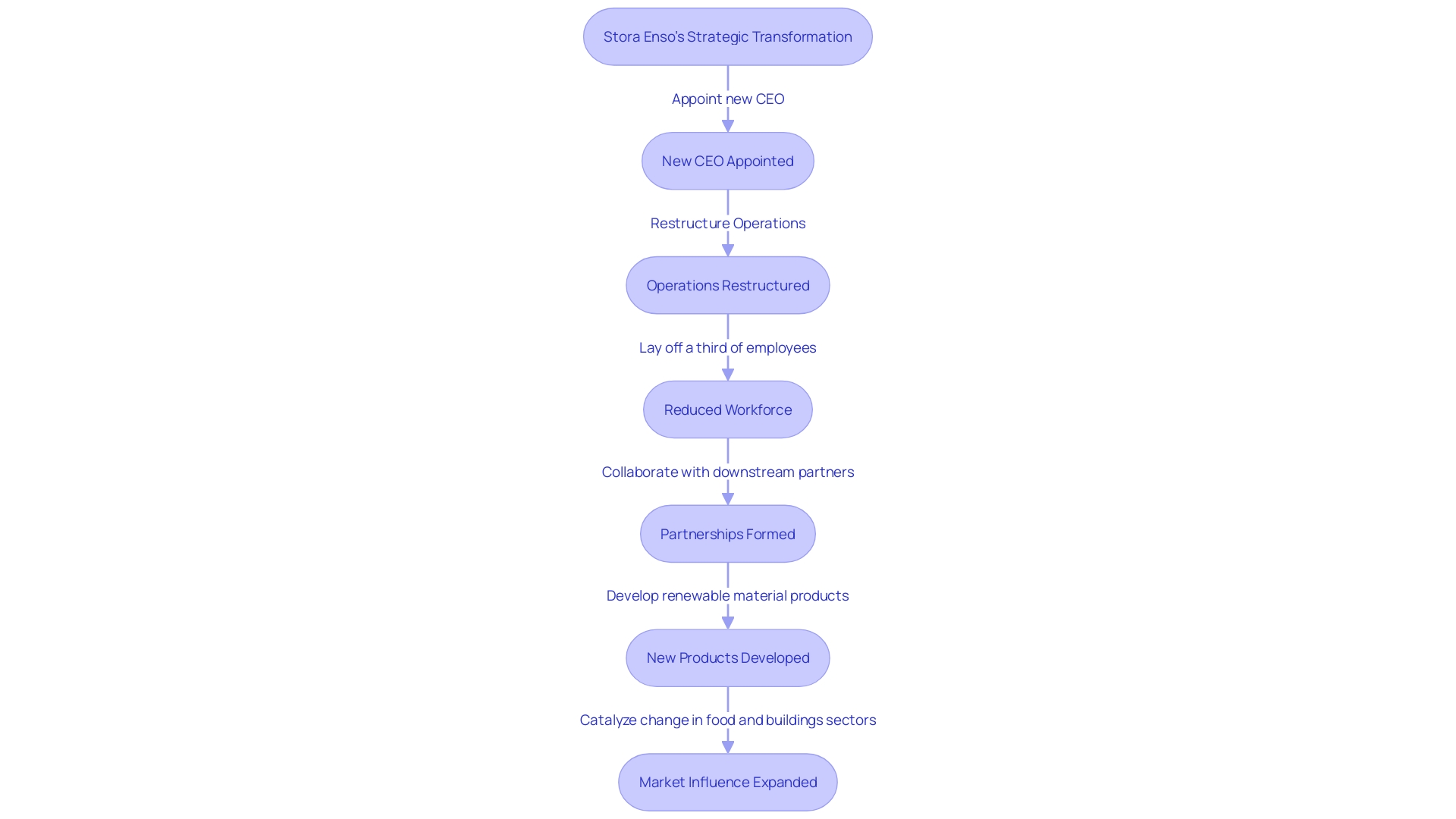
Mergers and Acquisitions (M&A)
Mergers and acquisitions (M&A) serve as a pivotal strategy for organizations aiming to enhance their market position, optimize resources, and achieve economies of scale. A prime example of this strategic maneuver can be witnessed in the healthcare sector, where Johnson & Johnson's acquisition of Abiomed, a specialist in cardiovascular devices, underscores the potential of M&A in driving growth and fostering innovation. By identifying areas of high growth, such as the cardiovascular segment, and leveraging existing strengths in electrophysiology, J&J exemplifies how thoughtfully planned M&A can create value that surpasses the capabilities of standalone companies.
M&A is not just about growth; it's also a response to economic distress, as noted in a Kaufman Hall report which attributes nearly 40% of Q3 2023 deals to monetary challenges. This trend is mirrored by significant transactions in the hospital sector, including Kaiser Permanente's acquisition of Geisinger Health, which, as reported by The Wall Street Journal, could generate a combined revenue exceeding $100 billion. Such moves exemplify how M&A can serve as a lifeline, offering financial stability and an expanded footprint in the healthcare landscape.
However, the path of M&A is fraught with complexities. After the initial transaction, organizations must navigate the integration of diverse cultures, systems, and operational practices. The situation of one organization struggling with 18 distinct payroll systems post-acquisition showcases the complex challenges that can arise, emphasizing the requirement for meticulous planning and execution to attain the desired synergistic advantages.
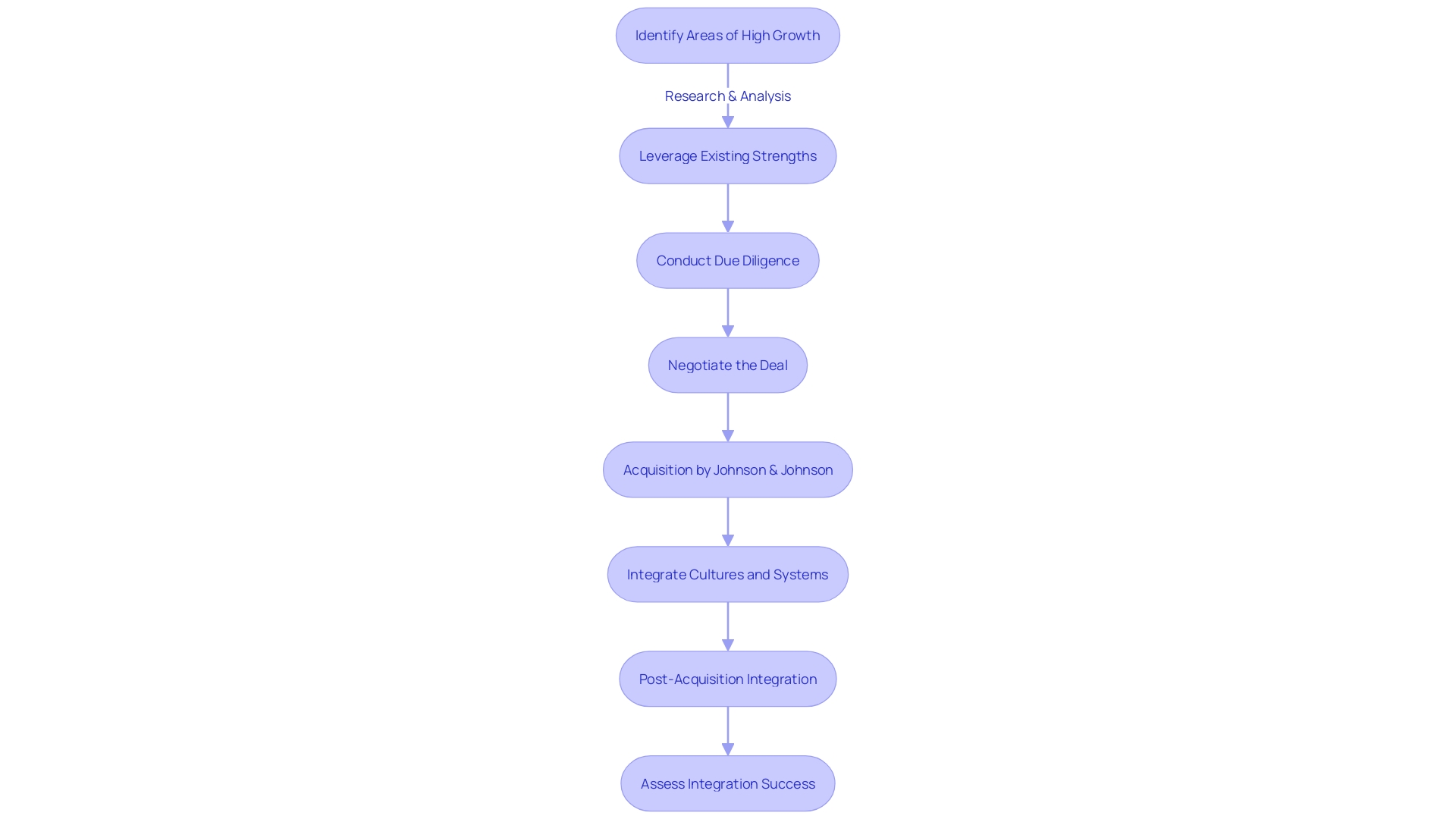
Portfolio Restructuring
In the ever-changing realm of commerce, adjusting to market demands and capitalizing on growth opportunities are crucial for a company's survival and success. A prime example of successful adaptation is TBC Bank, Georgia's premier financial institution established in 1992. This organization has demonstrated an unwavering commitment to its mission of easing the lives of its customers by significantly improving the time-to-market of its digital products, thereby providing an enhanced banking experience.
The case of TBC Bank underscores the significance of strategy definition and portfolio prioritization. To optimize operations and strengthen market presence, TBC Bank aligned its offerings with objectives, reflecting a clear vision, mission, and long-term goals. This strategic move is not solely about prioritizing projects or products; it's about the seamless integration of customer preferences and behavior into the operational framework.
Joan Beets accurately expressed, 'Change is the only constant thing in life – and in the professional world.' As enterprises progress, so do the obstacles and uncertainties they encounter. Company reorganization can be a tumultuous experience, affecting job security and work culture, but it's a crucial step toward enhancing efficiency and refocusing strategic direction.
Moreover, the shifting architecture of business models is evidenced by firms like Hawkins\Brown, which transitioned to an employee ownership model for sustainable growth. This structural change demonstrates a commitment to employee engagement and shared success, despite the impact of external factors such as the recent pandemic.
In the consumer sector, the performance of companies like Britannia underscores the necessity for strategic economic reorganization to sustain growth, even in the presence of price hikes. A thorough analysis of financial statements and a clear definition of restructuring goals are imperative for any company aiming to improve its financial health and ensure long-term stability.
In a business environment where unicorns are becoming more common, it's critical to reevaluate success beyond market value. Companies that generate significant cash from operations without consistent venture capital injections exemplify true entrepreneurial triumph. This level of self-sufficiency is a testament to a company's robust strategy and its ability to pivot effectively in response to market changes.
Firmly rooted in strategic foresight and an understanding of the broader technological and demographic shifts, portfolio restructuring is not just about internal adjustments—it's about proactively responding to the external environment with agility and precision. The culmination of these efforts can lead to a remarkable business turnaround, setting precedent for others in the industry to follow.
Cultural Restructuring
Organizational culture can serve as a crucial pivot point in a firm's trajectory, influencing everything from employee engagement to the speed of decision-making. A remarkable instance of this is the experience of TBC Bank, Georgia's leading financial institution, which embraced cultural reorganization to streamline its operations and expedite its delivery of value to customers. TBC Bank's commitment to 'making people's lives easier' permeated its transformation, encouraging innovation and collaboration to improve its digital offerings and enhance both customer and employee experiences. Similarly, the revitalization of Edwards Air Force Base's culture under General E. John "Dragon" Teichert's command showcases how a deliberate focus on innovation can ignite a stagnant environment, fostering a culture that not only breaks bureaucratic barriers but also significantly elevates performance. These case studies demonstrate the significant influence that a strategically shaped organizational culture can have on a firm's achievement, aligning with the insights from the New York Fed's Governance & Culture Reform Initiative, which highlights culture as a foundational element of risk management and economic prosperity. Moreover, the research corroborates the importance of culture as the collective mindset that guides behavior, further underlined by the McKinsey Global Survey's findings on the essential actions for successful transformations. The journey to cultural transformation is complex, but with thoughtful examination of existing cultural dynamics and a clear vision for change, companies can navigate the path to a dynamic and resilient organizational culture.
Key Components of a Successful Turnaround Strategy
A successful turnaround strategy depends on recognizing and leveraging the distinctive strengths of an enterprise, as demonstrated by the example of a branded hotel's restaurant that increased its sales by capitalizing on its prime location. The establishment's strategic revamp included an extensive market research to inform its restaurant concept, understanding the preferences of existing customers for consistent service, and optimizing the layout for increased seating and turnover. These targeted actions underscore the importance of a multidisciplinary approach to restructuring efforts.
In the wider context of corporate turnarounds, it's important to note that the same principles apply across various sectors. For example, healthcare startups that have achieved successful exits commonly demonstrate not only founder perseverance and confidence but also strategic decisions such as acquisitions, IPOs, and lucrative partnerships. These elements are part of a universal toolkit for revitalizing companies.
The need for alteration in the corporate world is emphasized by data revealing that competitive pressures and market opportunities prompt over half of enterprises to adjust every two to five years. Technological advancements often drive this need for change, yet there is a lag in adaptation, highlighting the importance of agility and foresight in turnaround strategies.
Moreover, the restaurant industry, with its high turnover rate, exemplifies the challenges of sustainability and employee retention in a competitive market. Comprehending and tackling the factors that contribute to industry-specific challenges, such as staffing shortages and operational demands, is crucial for any organization aiming to implement a successful turnaround strategy.
Strategic Planning and Decision-Making
Strategic planning and decision-making are key components of guiding an organization through a restructuring process. A vivid example comes from the delivery industry, where a company specializing in bicycle deliveries faced challenges when scaling to a larger city. The increased distances between pickup and drop-off points slowed down their operations, revealing an oversight in their expansion strategy. To adapt, they diversified their delivery methods to include motorcycles and cars, demonstrating the necessity of evolving strategies to match the operational context.
Nokia's forward-looking statements highlight the significance of strategic foresight in the corporate world. They outline plans for growth management and operational performance, acknowledging the unpredictability of future developments. Likewise, companies must develop strategic plans that are resistant to market fluctuations, enabling adaptability when confronted with unforeseen obstacles.
The components of strategy development—objectives, strategy, development, and planning—are essential for navigating competitive markets. Objectives articulate a clear vision, while the strategy sets the course for achieving them. Development allows for continuous improvement, and planning outlines the actionable steps needed within a specific timeframe.
The importance of strategic planning is further emphasized by market competition, with research by Bryan Solis indicating that over half of surveyed organizations recognize market competition and growth opportunities as reasons for change. Additionally, the tenacity of family-owned businesses, which contribute significantly to global GDP and employment, showcases the value of steadfast strategic planning across generations.
When it comes to making changes, the human aspect must not be disregarded. Joan Beets mentions that company reorganization can cause anxiety and uncertainty among employees. Acknowledging these emotions is integral to the process, ensuring a successful transition.
Ultimately, strategic planning is not just a linear process but a dynamic one that requires continuous adaptation and resilience. By incorporating these principles, companies can more effectively navigate the intricacies of reorganization and come out stronger.
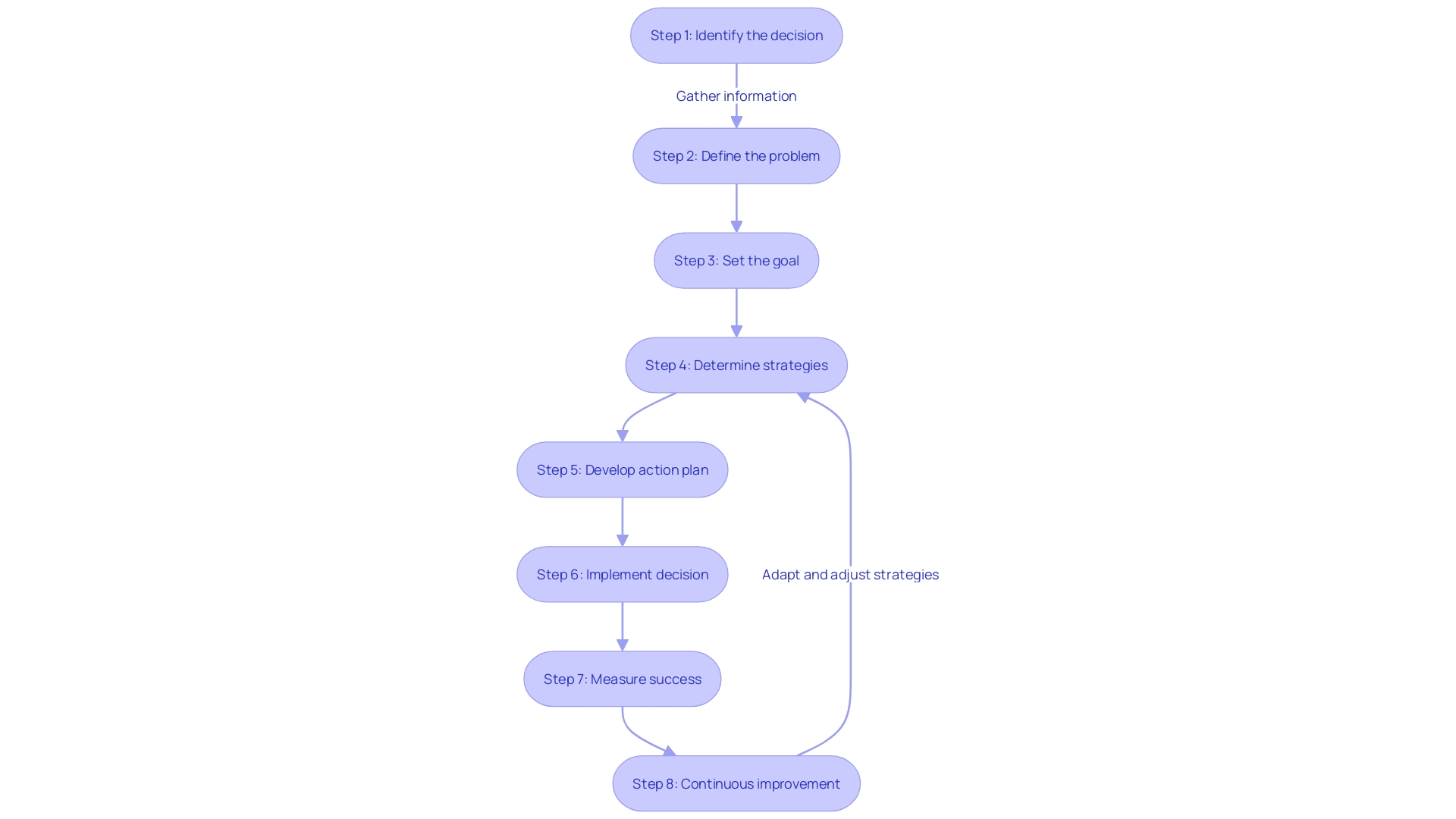
Operational Restructuring
TBC Bank, a prominent financial institution in Georgia founded in 1992, engaged in a strategic operational restructuring aiming to increase its agility and improve customer experiences. The bank's mission to simplify the lives of its customers guided its transformation towards offering faster digital products and enhancing banking operations. The success of this initiative became evident as TBC Bank achieved an expedited time-to-market for its digital services, delivering a superior banking experience to both customers and employees.
Another compelling example comes from the hospitality sector, where a well-known hotel with a prime location in the city center struggled to boost Food & Beverage sales through its single restaurant. By implementing a strategic overhaul focused on capitalizing on its location to attract more diners, the hotel saw a significant uptick in sales within the first week post-restructuring, receiving outstanding reviews. John Young's insight underscores the importance of understanding the market as the primary step in refurbishing or launching a restaurant, leading to the hotel's success.
In a broader business landscape, a logistics services provider experienced the challenges of a competitive market that revealed the limitations of its growth strategy. The organization, which had grown significantly, found its size inadequate to distinguish itself in a market requiring distinct value propositions. The shift in strategy, moving away from a 'one-size-fits-all' offering to a more tailored approach, enabled the company to establish a unique edge in the market.
Joan Beets, an experienced strategist, remarked, 'Change is the only constant thing in life - and in the corporate world.' This statement captures the essence of operational transformation, a process that not only aims at improving efficiency and reducing costs but also involves managing the complexities of change within an organization. As the corporate world navigates transformations, communication emerges as a critical factor. A McKinsey Global Survey highlighted that successful reorganizations are often characterized by comprehensive communication strategies that ensure employees are informed and engaged throughout the process.
The importance of change management is further emphasized by the financial sector's embrace of advanced models and tools to navigate the myriad of variables inherent in business operations. These methodologies enable leaders to optimize returns and manage initiatives effectively, aligning with the broader goal of operational realignment.
In the face of diverse market pressures, encompassing macroeconomic conditions, supply chain challenges, and evolving workplace trends, organizations are increasingly acknowledging the necessity for agility and adaptability. Forward-looking statements from industry leaders reflect a commitment to continuous improvement and innovation to stay competitive and responsive to change.
Operational reorganization, therefore, is not just about process optimization; it's about positioning an organization to prosper in a dynamic business environment, where the capacity to quickly adapt and innovate is crucial. These case studies and expert insights illustrate the transformative power of operational changes when executed with strategic foresight and a strong focus on communication and change management.
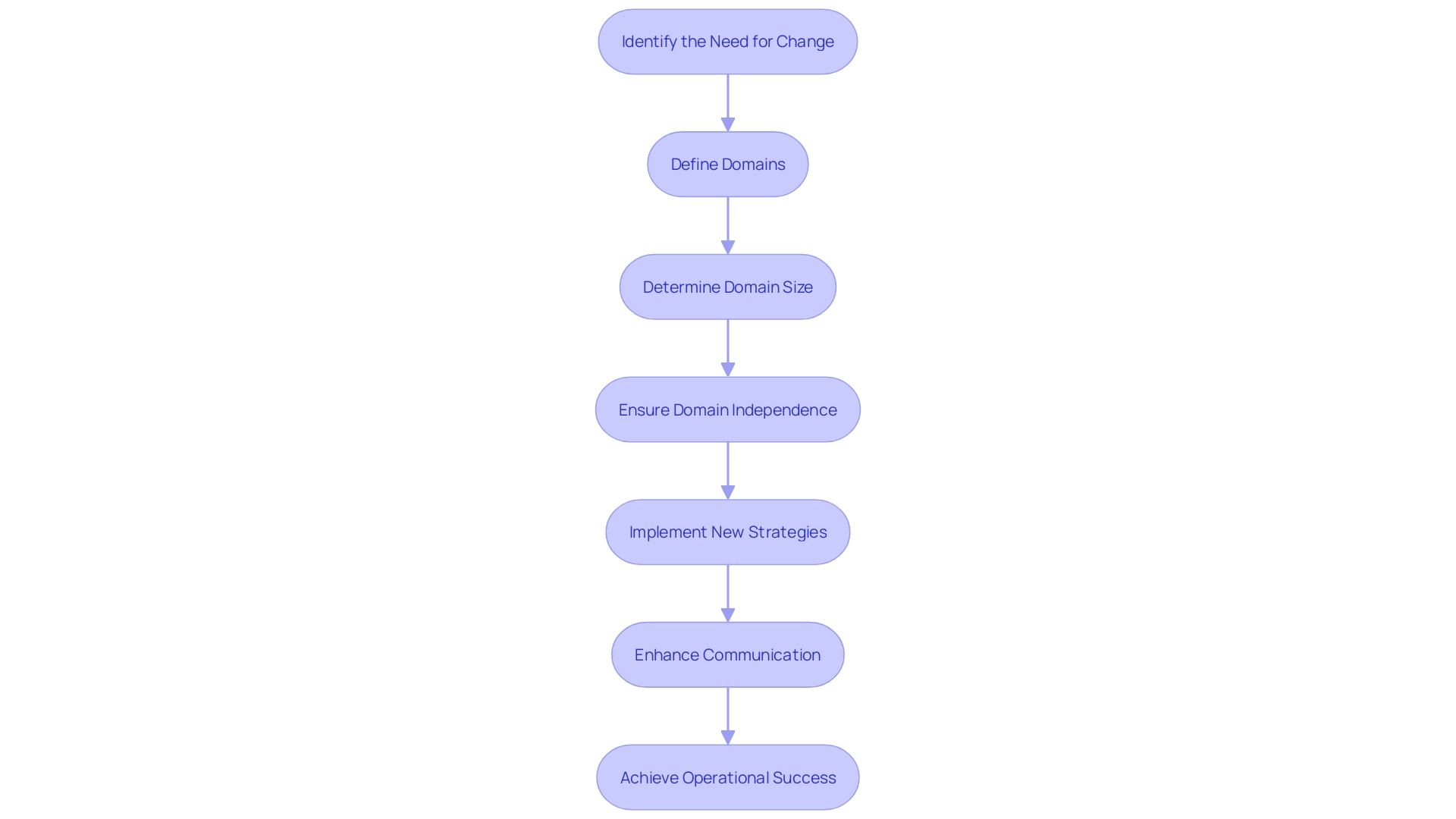
Financial Restructuring
Managing the intricate procedure of restructuring finances is crucial for organizations experiencing economic difficulties. Through analyzing the crucial stages of this procedure, we can observe how rearranging a company's monetary responsibilities and framework can result in enhanced economic well-being and stability. A comprehensive examination of statements is the beginning, which entails examining balance sheets, income statements, and cash flow statements. The next step is to pinpoint the root causes of financial issues, which could range from excessive debt to insufficient liquidity. With these insights, companies can establish specific goals for organizational changes, such as debt reduction, cash flow enhancement, and optimization of capital structure.
The case study of Dow Jones and The Wall Street Journal's WSJ 2020 initiative exemplifies a transformative approach to restructuring. By modernizing editorial processes and realigning roles towards a digital-first strategy, they have redefined their business model for the digital age. This kind of strategic adaptation is echoed in the thoughts of former CEOs of 7-Eleven and Blockbuster, who view 'Change Equals Opportunity.' Embracing change and seizing opportunities can lead to prosperity, as opposed to the downfall that may come from resisting it.
Restructuring also involves legal, contractual, and governance considerations, as well as the management of monetary resources. In today's digitized sector, the dependence on third-party service providers for critical shared services has increased, bringing both benefits and risks. The 2016 Guidance with its addendum on digitalization is evidence of the changing nature of economic reorganization.
Furthermore, the process of reorganization can fundamentally change the operational dynamics of an organization, as mentioned by Joan Beets. This change can induce a range of emotions among employees, from anxiety to a sense of loss, all of which must be managed carefully. The ultimate objective of restructuring is not just to survive a period of distress but to emerge more resilient, with improved liquidity and operational efficiency, paving the way for growth and successful mergers or acquisitions.
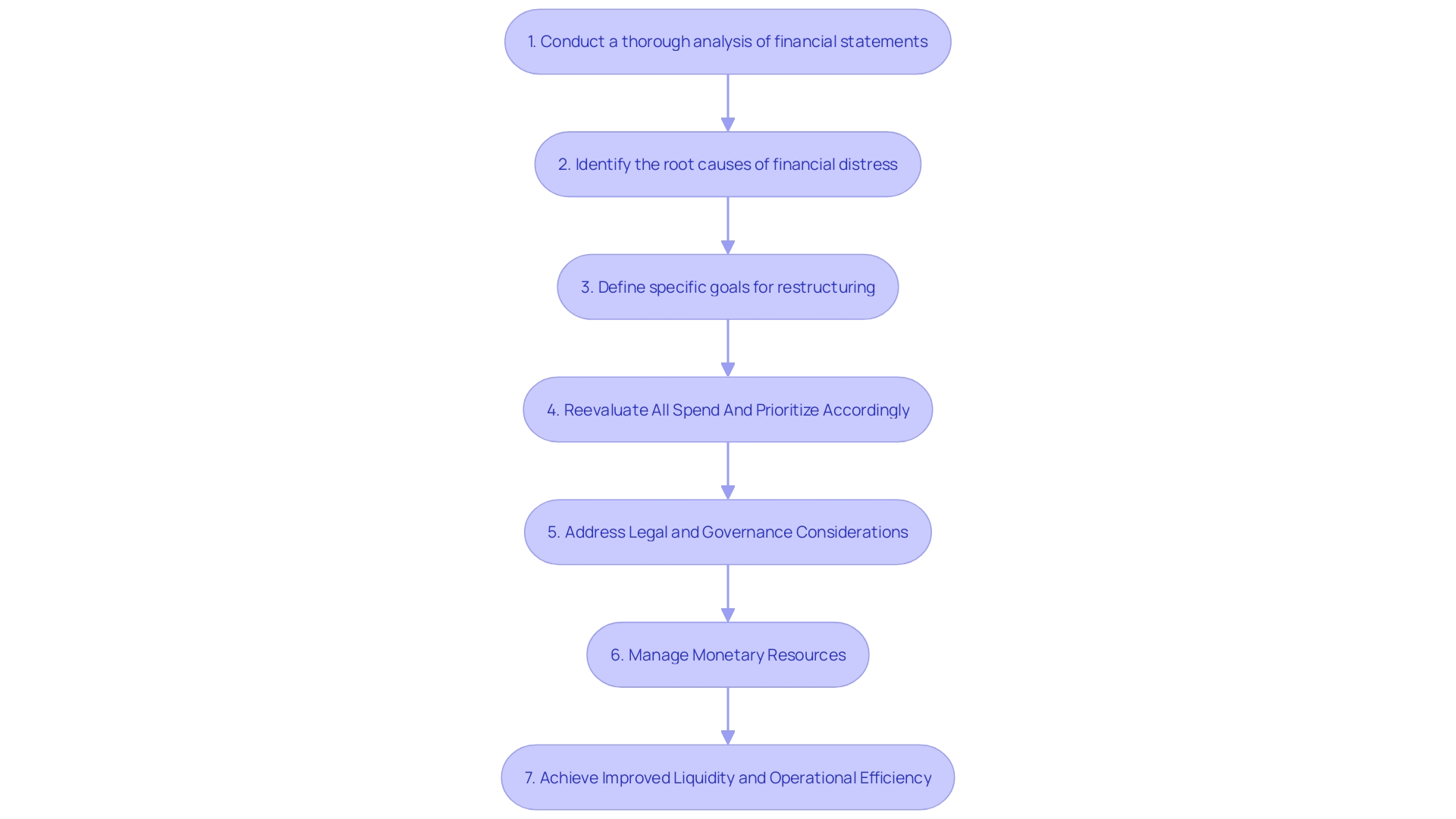
Crisis Communication
In a landscape where stakeholders' trust can be as volatile as market conditions, the art of crisis communication becomes an indispensable part of a turnaround strategy. A poignant case study that underscores this dynamic involves a strategic internal memo, initially aimed at employees but with the inherent potential to reach customers and the broader public. In the midst of a crisis, an organization's capacity to wisely handle media and public perception can determine the outcome between recovery and collapse. Public relations crisis management, therefore, is not merely reactive damage control; it's a proactive safeguarding of a brand's reputation. It is the meticulous balance of being transparent about challenges while not overshadowing the good news. A well-crafted message, such as the empathetic address to employees that is quoted, 'Whenever a challenging or unexpected event impacts this company, I can always count on everyone to rise to the occasion,' exemplifies the power of placing employee well-being at the forefront, which resonates with all stakeholders and bolsters both financial and reputational fortitude. In today's digital age, the immediacy with which information spreads demands a response framework focused on relevance and impact, ensuring that the well-being of those affected is prioritized and communicated with genuine empathy. As we've seen, whether it's a health and safety issue, discrimination, environmental damage, or a cyber attack, the ramifications on public trust can be severe. The goal of crisis communication is to navigate these turbulent waters, preserve the integrity of the organization, and emerge stronger in the eyes of those who matter most.
Measuring Progress and Success
Changing an enterprise is similar to leading a intricate orchestra; it demands accuracy, flexibility, and a clear comprehension of the final objective. McKinsey Global Survey's latest findings underscore the high stakes involved in organizational change, emphasizing the need for a robust strategy that encompasses will, skill, rigor, and scope. To navigate through this intricate process, seven strategic actions have been distilled, which significantly boost the likelihood of enduring success and competitive advantage. These encompass role modeling, swift execution, and a comprehensive approach to change.
In line with these insights, the World Bank Group has innovated a new corporate scorecard, revolutionizing how progress is measured. This efficient tool concentrates on 22 vital indicators, shifting the focus from inputs to outcomes—a reflection of the contemporary requirement for companies to be outcome-driven. It encapsulates the essence of transformation, providing a clear, actionable guide that aligns with strategic objectives like tackling poverty, climate change, and other pressing global challenges.
As enterprises encounter unparalleled market competition and technological advancements, the requirement for alteration becomes more frequent and urgent. Surveys indicate that almost 80% of enterprises must adapt every two to five years to stay viable. This underscores the dynamic nature of the corporate world, where adaptability is not an option but a requirement for survival.
Amidst this backdrop, companies like AT&T have confronted their longstanding bureaucratic structures, driven by a desire to innovate and a response to employee feedback. The result is an organization that's more agile and better equipped to meet the demands of a rapidly changing industry.
These case studies and statistical data serve as a blueprint for measuring the effectiveness of a turnaround strategy. By implementing a focused approach to tracking progress, similar to the World Bank Group's scorecard, organizations can ensure they are not only achieving but also sustaining performance improvements, ultimately securing a lasting competitive edge in a world that never stands still.
Employee Morale and Commitment
The importance of maintaining employee morale and commitment cannot be overstated during a turnaround. Committed employees are crucial to the success of organizational changes. A compelling case study from Ty, the world's leading soft toy manufacturer, underscores this point. Ty faced a major overhaul of their outdated communications system, which was pivotal for connecting their widespread workforce. The implementation of a new cloud-based solution not only improved internal and external communications but also played a crucial role in enhancing flexibility for hybrid workers and providing valuable data insights, all within budget constraints.
In the broader context of business restructuring, it's clear that motivation extends beyond monetary compensation. As Startup Professionals' CEO Martin Zwilling points out, leaders who aim to 'change the world' and build lasting legacies understand the power of non-cash motivators. Echoed by leadership expert Charles P. Garcia, the notion is that employees greatly value strong leadership that encourages them to excel, sometimes more than financial rewards. This is supported by the World Health Organization's findings, which reveal a staggering 1 trillion dollars lost annually due to productivity drops linked to mental health issues. With 15% of the global workforce experiencing mental health problems that affect their work, it's clear that improving morale involves creating a culture of well-being that integrates personal and professional life.
Managing morale involves recognizing its multifaceted nature, which includes satisfaction, engagement, motivation, confidence, and optimism about the future. It's an individual's personal energy and enthusiasm for their work. Therefore, during times of uncertainty, showing employee appreciation and providing a supportive environment is crucial to retaining key talent. Effective strategies may include revisiting benefits packages and ensuring opportunities for work-life balance, as well as offering incentives aligned with employees' values and the company's capabilities.
Customer Retention and Supplier Relationships
The success of a turnaround strategy often hinges on the strength of customer and supplier relationships. A compelling example of this is a major hotel's branded restaurant, which struggled to boost food and beverage sales despite its prime location in a bustling city center. The turnaround strategy hinged on leveraging this location to attract more diners. Through meticulous market research, the hotel fine-tuned its restaurant concept, aligning it with the preferences of the target market. The strategy included a redesign of the restaurant's layout to optimize seating and turnover, ensuring a consistent service for the clientele. As a result, the restaurant garnered outstanding reviews and a significant uptick in sales within the first week of implementing the new strategy.
The journey to this turnaround success was multifaceted. It entailed an extensive exploration of the hotel's current operational structure and a comprehensive evaluation of future needs and anticipated expansion. The tailor-made design for the restaurant was crafted based on these insights, with various alternatives developed and considered. This comprehensive multi-disciplinary approach underscores the importance of understanding and serving the market effectively.
In the realm of customer experience trends, personalization, omnichannel engagement, and technology integration have taken center stage. Companies that excel in customer satisfaction often do so by leveraging data to cater to customer needs proactively. In a recent survey by the Institute of Customer Service, customer satisfaction levels were reported to be at their lowest since 2015, highlighting the importance of prioritizing customer relationships, especially when challenges arise.
Fiscal responsibility and customer-centricity also play pivotal roles in a business's durability and turnaround success. As Jeff Bezos of Amazon emphasizes, obsessing over customers and maintaining a frugal mindset even during growth phases is essential. It's this balance between customer satisfaction and fiscal prudence that often sets apart the companies that not only survive but thrive.
In the competitive e-commerce landscape, customer value is a crucial focal point. Metrics such as post-acquisition value (PAV) are vital, representing the net present value of a customer's revenues post-acquisition. Precisely computed, PAV can guide investment decisions in customer acquisition based on projected customer lifetime value, thus informing strategic planning for sustainable growth.
Case Study: Implementing Turnaround Strategies
TBC Bank, a financial leader established in Georgia in 1992, embarked on a journey to expedite the launch of digital products, enhancing the banking experience for both customers and employees. Recognizing the necessity to evolve from their large-scale, complex operations to a more agile framework, they embraced a strategic overhaul to facilitate continuous value delivery. Similarly, a prominent hotel with a central city location faced stagnation in its food and beverage sales. The strategic pivot involved capitalizing on their prime location to boost diner traffic, underlining the importance of understanding the market for successful refurbishment or establishment of a dining venue. These instances exemplify the critical nature of strategic adaptation in the face of evolving market demands and highlight the potency of targeted restructuring efforts in overcoming operational challenges.
In the ever-changing realm of startups, with over 600,000 new enterprises emerging globally, staying flexible in technology, healthcare, and finance sectors is crucial. The rapid pace of technological advancements requires companies to adjust every two to five years to preserve competitive relevance, as demonstrated by Bryan Solis's research. In the restaurant industry, the struggle to retain staff and meet customer demand illuminates the broader implications of industry turnover rates, which soared to 6.1% in late 2023. Restaurants, in particular, struggle with the challenges of high turnover due to the demanding work conditions, making it crucial for enterprises to adopt innovative solutions to attract and retain talent.
Joan Beets poignantly asserts that change is the only constant in life and the corporate world. This sentiment is echoed by a McKinsey Global Survey, which found that a successful corporate reorganization hinges on clear communication, revealing that 66% of such companies had implemented a comprehensive communication strategy. While organizations navigate the unpredictable challenges of transformation, recognizing the workforce's psychological reaction becomes just as vital as the strategic readjustment itself. The intertwining of market forces, technological progression, and human factors in these examples provides a rich tapestry of insights for those at the helm of business restructuring.
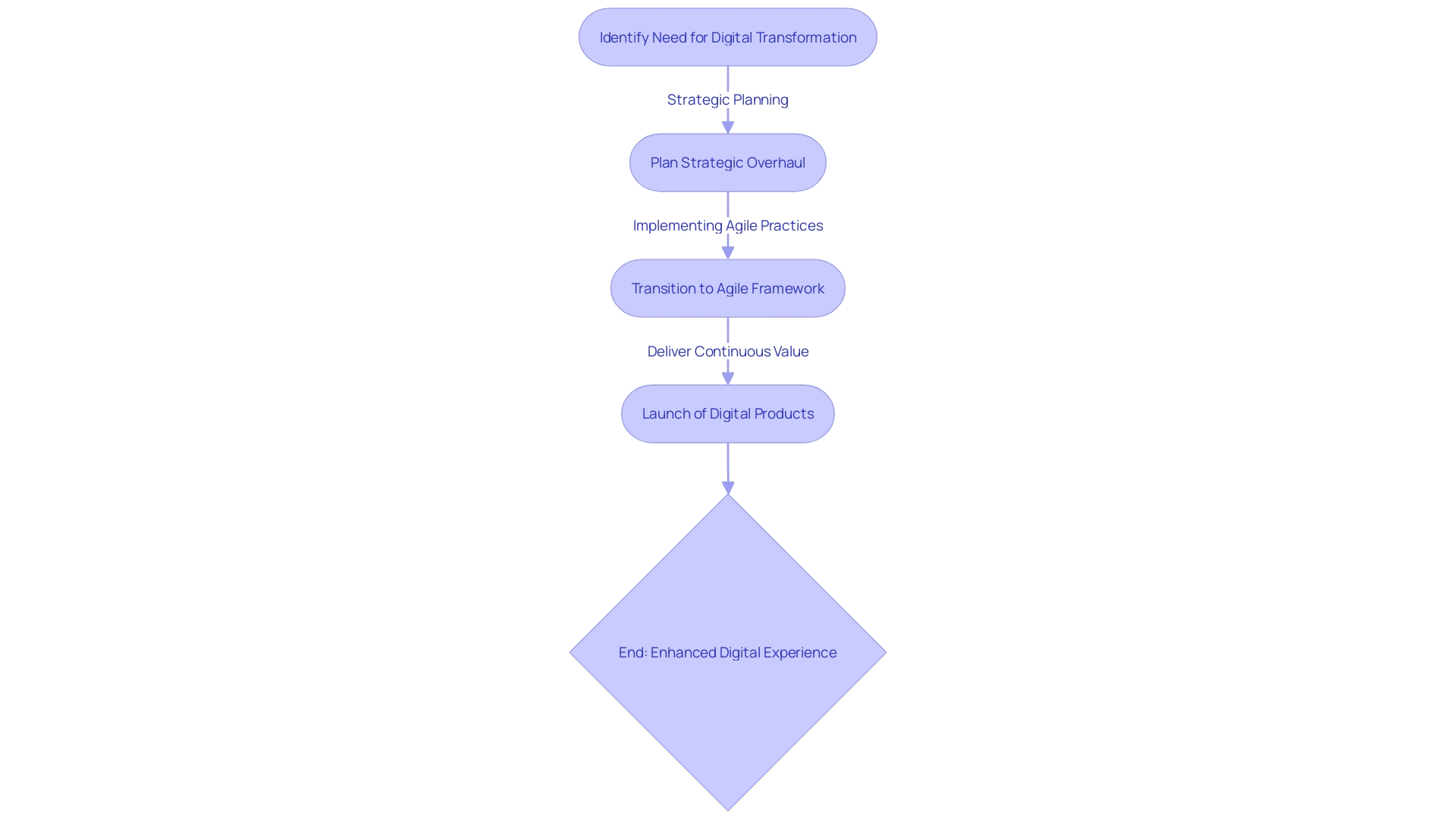
Conclusion
In conclusion, successful restructuring and turnaround strategies are vital for companies facing financial difficulties. These strategies involve making operational and organizational changes to boost efficiency, reduce costs, and shift strategic directions. Key components of a successful turnaround strategy include strategic planning, measuring progress, employee morale, and customer retention.
Strategic planning plays a crucial role, with clear objectives, a robust strategy, continuous improvement, and actionable planning. Measuring progress and success is essential to track performance, sustain improvements, and maintain a competitive edge. Employee morale is critical, requiring a focus on motivation and creating a culture of well-being.
Customer retention is paramount, achieved through understanding market demands, personalization, and technology integration.
Case studies, such as Stora Enso's transformation into a renewable materials company and TBC Bank's digital product launch, demonstrate the effectiveness of strategic adaptation and targeted restructuring efforts. These examples highlight the importance of aligning with market trends, understanding customer and employee needs, and embracing change for growth and profitability.
In conclusion, successful restructuring and turnaround strategies require recognizing the need for change, adapting to market conditions, and implementing a comprehensive approach. By prioritizing strategic planning, employee morale, customer relationships, and measuring progress, companies can navigate the complexities of restructuring and emerge stronger and more resilient.




